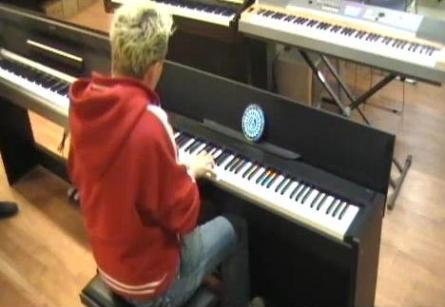
Layering multiple sounds on a Piano Keyboard is a great way to come up with interesting patches. Here we take a closer look at layering (on keyboard instruments) and teach you how to layer sounds the right way and use them in various settings.
Lot of keyboard players on decent keyboard instruments but they don’t take the time to get to know their instrument. One of the keys to becoming a better keyboard player is to also know your gear (besides being able to play well).
Layering is a very useful tool available to keyboard players and lets you add some “magic” to your sounds. You can come up with much thicker sounds using this feature.
And for novices, learning to layer is a great way to get your creative juices flowing. Often, when composing music, lot of time is spent on choosing the right set of sounds for the music. Learning to layer the various sounds will give you an idea as to what sound combinations sound great.
There are several digital piano models (with fully weighted keyboard) that have limited number of sounds. These are designed for piano practice. So if you’ve gotten bored of using the few piano sounds (i’m sure they sound good) you can always layer the piano sounds with other sounds to create more refreshing sounds.
Layering a piano with strings is the most common form of layering; but you’re free to try out more combinations to see what you like.
While layering is available on all keyboards, how many sounds one can layer, and how quickly you can layer sounds will depend on the model you have.
Usually, most budget keyboards will let you layer only two sounds, and there is a series of steps that you need to follow to create the layer sounds. These can then be saved for later recall. However, on the pro keyboards, layering is faster and you can layer several sounds at one time.
Top end keyboards such as Roland RD-700sx (stage piano, now out of production) make it very easy to layer sounds; you can do it on the fly. Nord Stage pianos also let you layer on the fly, but such pro keyboards are priced on the higher side.
However, if you are going to use the keyboard mostly in a studio setting, you could use software to layer sounds. You need a computer/Mac, DAW (sequencing) software and virtual instruments (Omnisphere, Keyscape, Native Instruments Komplete, etc.) May be you need to add a fader controller like the Korg NanoKontrol to the mix and you can layer several sounds together. In this setting, your keyboard will work more like a controller.
KeytarHQ editorial team includes musicians who write and review products for pianists, keyboardists, guitarists & other musicians. KeytarHQ is the best online resource for information on keyboards, pianos, synths, keytars, guitars and music gear for musicians of all abilities, ages and interests.



Even i always felt that the layering process on most keyboards is lengthy, its not spot on. You can save the sounds to the banks for later recall, but ability to change sounds instantly should be made available. The sounds are hidden within the banks and you have to select the numbers within those banks. On most pianos, you can layer only two sounds at a time. You have to press several buttons simultaneous in order to use the layered sounds you saved in the banks.
You cannot do it on the fly, in the middle of a performance; you have to stop playing to change the sounds, which is not the way to go i feel.
Yamaha Motif ES6 has a Performance Creator (layered sounds) which is easy to use. It allows you to layer a sound with another sound, add a drum and an arp that can be assigned to sliders, which can then be ramped up or down while playing. Great feature.